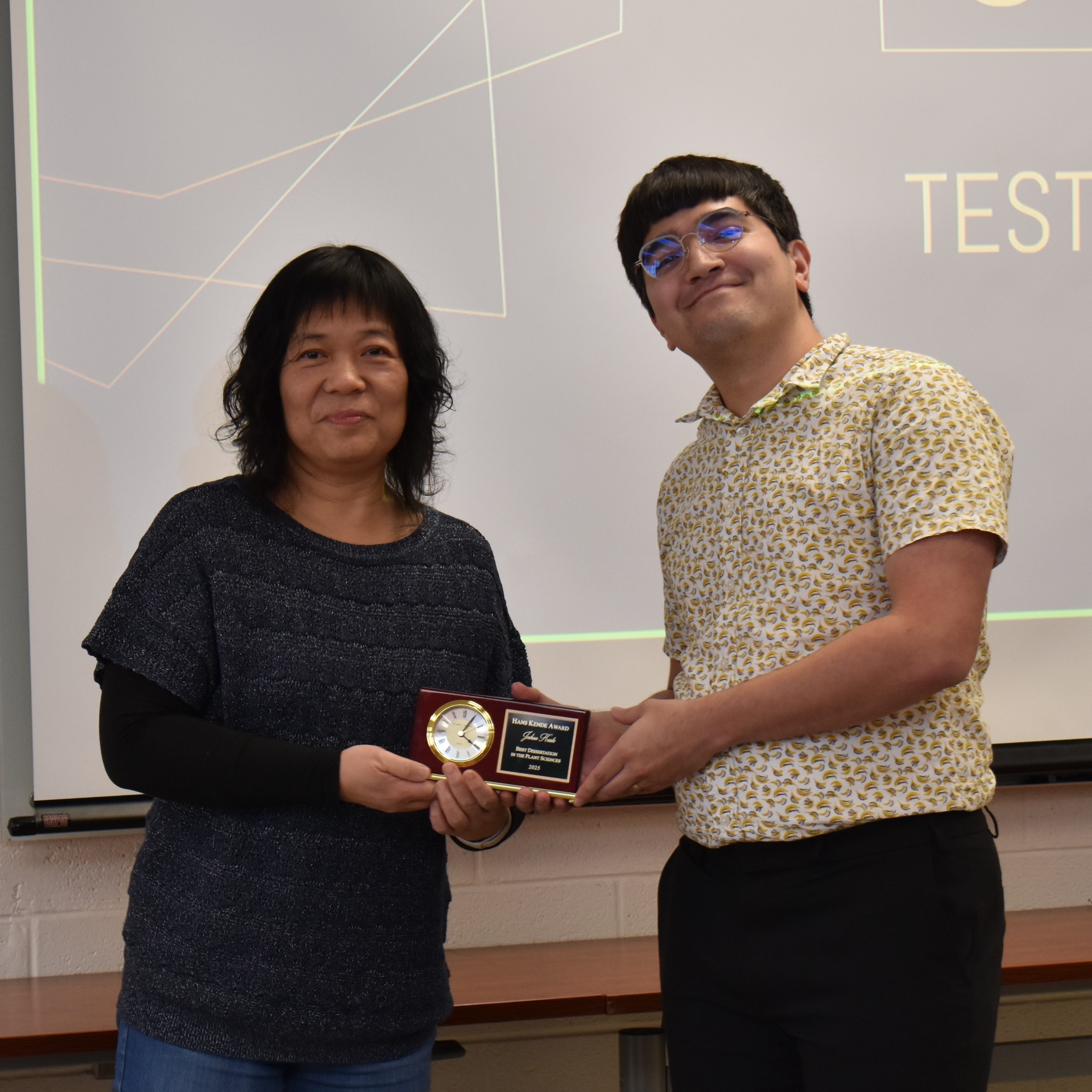MSU plant sciences bring research to middle school classroom

By Kara Headley
The next generation of scientists can be found in middle and high school classrooms and showing them the joys and processes of scientific discovery early on can lead to students choosing a career in STEM.
For the second year, the MSU-DOE Plant Research Laboratory, or PRL, Community Building and Outreach Committee, or CBOC, participated in the MSU Detroit Early Honors Experience, a collaboration between Detroit Public Schools Community District and several departments at MSU. The day the MSU plant science community participated in was focused on teaching Detroit high schoolers biology concepts and research techniques out in the field. Through this program, the researchers hope to inspire students to pursue a career in the plant sciences.
Four PRL members, and two members from the Plant Resilience Institute and the Department of Biochemistry & Molecular Biology respectively, made up the team who participated this year. The team traveled to Detroit, where they spent the day working with gifted and talented rising eighth and ninth graders from across the city.

By Kara Headley
“By reaching out to the younger students and the general community, we make science more approachable and relatable to daily life,” said Jinjie Liu, fixed term assistant professor. “Such experiences can be beneficial in inspiring students’ curiosity and fostering an interest in science.”
The morning started with the PRL researchers teaching biological concepts. The students learned about genotypes, or the characteristics of an organism that are determined by genetics, and phenotypes, the observable characteristics of an organism. Phenotypes can be determined by a number of factors, including genotypical and environmental.
With this knowledge, the students came up with research questions to explore at the MSU-Detroit Partnership for Food, Learning and Innovation (MSU-DPFLI), an urban agriculture center located in northwest Detroit.
“We want to give them an idea on how scientists work and think, and how they can use those concepts in their daily life, directly where they live,” said Stefan Schmollinger, research assistant professor at the PRL. “Conceptually, we want to give students a hands-on look at the scientific workflow, how you channel your curiosity into a structure that allows you to answer your questions yourself, confidently.”

By Kara Headley
The students were divided into six groups, each paired with an MSU volunteer. One group decided to look at tomato plants and see if they grew better in the greenhouse or outside. They measured the height of the plant and counted the number of fruits it produced to determine which plants were growing better. They found that the greenhouse tomatoes grew better.
Once they had that data, they needed to determine what about the greenhouse made the plants grow better. They took the temperature inside and outside, measured how much sun the plants were getting, and looked at the pH of the soil.
From these measurements, the students were able to draw conclusions about which conditions made the tomato plants grow best. Their conclusion was that the plants in the greenhouse received a more controlled amount of sunlight than those outside, allowing the plants to thrive.
The final step was to present their findings. Each group made a poster and presented it to their peers at the end of the day.
“We hope this workshop can expand the students’ knowledge and demonstrate how to use our knowledge to solve real world problems, just like scientists do,” Liu said.



